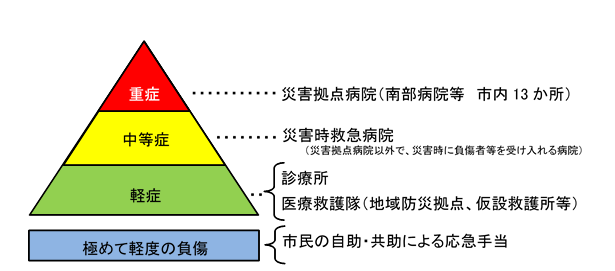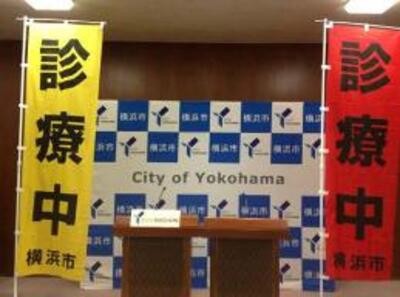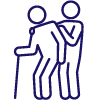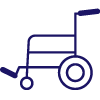- Yokohama-shi Top Page
- Konan Ward Top Page
- Disaster Prevention and anti-crime program
- Disaster Prevention and Disasters
- About medical care at the time of disaster
Here's the text.
About medical care at the time of disaster
Last Updated December 18, 2024
Disaster Medical System in Konan Ward
Medical care in the event of a large-scale disaster
It is expected that many injured people will come to medical institutions all at once for consultation.
In order to save the lives of as many people as possible, medical institutions may respond to the urgency and severity of injuries, etc.
It is necessary to determine the order of treatment and transportation (triage).
In Konan Ward disaster preparedness plan, medical institutions are classified according to severity, moderate or mild condition according to injury or other conditions.

| Emergencyness and severity | Consultation destination | |
|---|---|---|
| Severe illness | The potential danger of life; Or the danger of life is imminent | Disaster base hospital |
| Moderate disease | There is no danger to life, but Those requiring hospitalization | Emergency hospitals in the event of a disaster |
| Mild illness | There is no danger of life. Those who do not require hospitalization | clinics, etc. |
| It does not require a doctor's consultation Very mild injury | First aid provided by the inhabitants of the ward, self support community support (Please give first aid in cooperation with the people around you. In addition, first aid supplies (disinfectants, bandages, etc.) are provided in all evacuation shelter. ) | |
First of all, what you want to know in medical care in the event of a disaster
1 To save as many lives as possible and to avoid hospital confusion,
Medical institutions that provide medical treatment for injured persons, etc. are shared according to the urgency and severity.
If medical treatment or medical treatment is required at a medical institution during a disaster, the degree of urgency and the severity of symptoms are appropriate.
Let's go to a medical institution.
In the event of a large-scale disaster, the treatment of severely ill patients must be given priority to save as many lives as possible.
In Yokohama, disaster base hospitals provide treatment for severely ill patients, but to concentrate on the treatment and avoid confusion.
If you have mild symptoms, please consult a doctor at clinics, etc., where injured can be accepted.
2 In the event of a disaster, medical institutions that can escape the disaster and accept injured persons, etc.
A flag indicating "in medical treatment" is raised.
Let's check the location of nearby medical institutions and evacuation shelter in case of disaster.

※There are two types of flags, red and yellow.
The red flag is raised when disaster base hospitals, etc., which are responsible for accepting severely ill people, can provide medical treatment.
The yellow flags are shown by hospitals that accept the moderately ill and by the clinics, which is responsible for the mildly ill.
It is listed when medical treatment is possible.
(Depending on clinics, treatment may not be possible due to its specialty.)
※To check the locations of medical institutions and evacuation shelter in the city, the "Konan Ward Disaster Prevention Map" (PDF: 13,067KB)
Please use it.
In Konan Ward, we conduct training to display flags during medical treatment and opening hours.
[Recent Initiatives]
・September 2024 banner posting training report (PDF: 2,070KB)
・March 2024 banner posting training report (PDF: 2,632KB)
・September 2023 banner posting training report (PDF: 1,583KB)
・March 2023 banner posting training report (PDF: 2,415KB)
・September 2022 banner posting training report (PDF: 2,365KB)
・March and April 2022 banner posting training report (PDF: 1,183KB)
・September 2021 banner posting training report (PDF: 1,126KB)
・March and April 2020 banner posting training report (PDF: 662KB)
3 In the event of a disaster, the status of damage to medical institutions and information on medical institutions that can be treated will be posted on evacuation shelter, etc.
Estimation of urgency and severity in case of injury
When judging the degree of urgency and severity, select the consultation destination as follows.
When you are injured during a disaster, you can use it as a "guideline" when you judge the degree of urgency and severity.
"Whether you can walk on your own even if you are injured by a disaster?"
I'll judge it. This is based on the first step judgment guide of the START method (*).
(* START method: one of the criteria for determining priorities for injured, etc. in disaster medical care)
When judging the degree of urgency and severity, select the consultation destination as follows.
A If you are unable to walk on your own due to injury due to a disaster, you can judge it as "severe or moderate".
Among them, those who are particularly likely to be life-threatening (reduced consciousness, shallow breathing, poor pulses, cold limbs, etc.)
If you have severe bleeding, etc.), you can judge it as "severe", so select a disaster base hospital as your consultation destination.
For others, choose an emergency hospital in the event of a disaster.
B If you can walk on your own even if you are injured due to a disaster, you can judge it as "mild".
We will select clinics, which can accept injured (with a yellow flag) as the destination.
For those with chronic illness and those with disabilities, refer to the above “List of Consultations by Emergency / Severity”.
Select a consultation destination according to each symptom and condition.
We can download handbill "about medical care at the time of disaster" (PDF: 977KB) which listed indication of judgment of urgency, severity from this.
You may need a separate PDF reader to open a PDF file.
If you do not have it, you can download it free of charge from Adobe.
![]() To download Adobe Acrobat Reader DC
To download Adobe Acrobat Reader DC
Inquiries to this page
Konan Ward Health and Welfare Center Health and Welfare Division
Telephone: 045-847-8432
Telephone: 045-847-8432
Fax: 045-846-5981
Email address: kn-fukuho@city.yokohama.lg.jp
Page ID: 127-006-935












